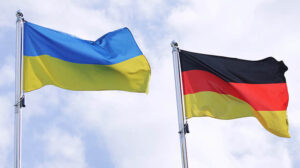
An important part of the Ukraine Recovery Conference 2024 (URC2024) in Berlin on June 11-12 this year will be a professional recovery forum aimed at achieving a concrete result in establishing contacts between Ukrainian, German and international stakeholders, German Development Minister Svenja Schulze said.
“This is not an idle conference, we would like to create a business development fund with systemic financial instruments to support, for example, small and medium-sized businesses or to support local reconstruction,” she said at a roundtable discussion on Ukraine’s reconstruction at the Munich Security Conference.
Schulze also noted the intention to create a center to provide municipalities with the information, funding and training services they need.
She said the role of municipalities will be one of the four main topics that will be the focus of URC2024, along with the role of the private sector and private investors, the EU accession process and the reforms needed for it, and the topic of human capital and social recovery.
“We need to mobilize the private sector. This is really important. Not enough public money? – We also need private money. We have local and regional requirements: municipalities and regions need to be part of this process and they need to help drive it forward,” explained the German Development Minister.
According to her, all these topics at the Recovery Conference will also be permeated by the common theme of digitalization, in which Ukraine has already achieved impressive results.
business development funds, GERMANY, municipalities assistance center

Germany has handed over a new military aid package to Ukraine, which includes a new Skynex anti-aircraft artillery system and ammunition, the German government’s press service reports.
In addition, ammunition for the Patriot and IRIS-T SLM systems, as well as for Leorard 2A6 tanks, was transferred.
The aid package also includes 10 Marder infantry fighting vehicles, 2 TRML-4D radars, 9,080 rounds of 155 mm ammunition, 2 WISENT demining tanks, 1 Biber bridge-building tank, 3,350 combat helmets, and 30 drone detection systems, 10 GO1 ground surveillance radars, 10 Zetros trucks, 3 8×8 HX81 tractors and a semi-trailer, 34 other vehicles, 305 MK 556 assault rifles, 0.75 million rounds of ammunition and 1152 winter camouflage nets.
In the future, it is also planned to transfer 4 IRIS-T SLM anti-aircraft missile systems, 1 more Skynex air defense system with ammunition, 20 drone detection systems, 26,850 combat helmets, 41 Mercedes trucks, 4,695 MK 556 assault rifles, 0.45 million rounds of ammunition for firearms and 8,000 anti-tank mines.

High interest rates and the termination of large-scale government assistance provided to companies during the COVID-19 pandemic have hit businesses in most developed economies hard, resulting in double-digit bankruptcy growth rates, the Financial Times reports.
Thus, the number of corporate bankruptcies in the United States for the fiscal year ended September 30 increased by 30% compared to the same period a year earlier.
In Germany, which is the largest economy in Europe, the number of bankrupt companies increased by 25% in January-September. Since June, double-digit growth rates have been recorded every month, the country’s statistical office said.
According to the EU statistics agency, the number of insolvent companies in the community countries increased by 13% in January-September and reached the highest level in eight years. In France, the Netherlands, and Japan, the number of bankruptcies in October increased by more than 30% year-on-year. In England and Wales, the insolvency rate in January-September reached its highest level since 2009.
The Organization for Economic Cooperation and Development recently reported that in a number of countries, including the Nordic countries of Denmark, Sweden and Finland, the number of corporate bankruptcies has exceeded the levels of the global financial crisis of 2008-2009.
The main negative factors are “the cost of debt servicing and the withdrawal of pandemic support, as well as high energy bills, especially in energy-intensive sectors,” according to Capital Economics Chief Economist Neil Shearing.
According to analysts, most bankruptcies were recorded in the transportation and hospitality industries.
Shearing warned that the trend of deteriorating solvency of companies will continue, as many businesses will have to refinance their debt at higher rates in the coming months, even though central banks are expected to have already reached their peak.
The surge in bankruptcies will put pressure on global economic activity and job growth over the next few years, experts say.
The international rating agency Moody’s expects the number of defaults of companies with speculative grade ratings in the world to continue to grow in 2024 after it already exceeded the average for recent years in October.
German insurer Allianz predicts that the global insolvency rate will reach 10% next year, up from 6% in 2023. The hospitality, transportation and retail sectors will be most affected.
“We are seeing an increase in corporate bankruptcies in almost all countries,” said Maxim Lemerl, a leading analyst at Allianz Research.

German Foreign Minister Annalena Burbock said that Germany will send a EUR6.1 million humanitarian aid package to Ukraine, which includes generators and batteries, the German Foreign Ministry’s press service reports.
“With the winter protective umbrella that we are stretching over Ukraine, we are helping the population to survive the cold season. Not only in the form of air defense systems, but also generators, blankets, tents and batteries. Together with the German Federal Agency for Technical Assistance (THW), we are sending additional cargoes this winter for a total of EUR 6.1 million,” the press service quoted Burbock as saying in a statement published on the Foreign Ministry’s website on Friday.
At the same time, German Interior Minister Nancy Feser noted that another 500 power generators worth about EUR3.5 million would be transferred to Ukraine.
“THW is currently preparing to transport more than 500 additional power generators worth about EUR 3.5 million and has already delivered some of them to Ukraine. The goal is to help cities and towns, especially in areas close to the front line. To support Ukraine’s energy infrastructure, THW has already purchased more than 1,300 powerful power generators (up to 1,250 kVA) and 20 batteries,” Feather said.
She noted that more than 800 power generators and 15 storage batteries have already been delivered to Ukraine, which are used at Ukrainian thermal power plants, pumping stations, large bakeries and hospitals, as well as for decentralized supply to the population.
Preparations are also underway to transport more than 900 heaters, 1,700 winter sleeping bags, winter clothing and a mobile field kitchen to Ukraine. In addition, two drinking water treatment plants will be transferred to the State Water Resources Administration in the near future to provide clean water to the population.

The German Federal Government has announced a new military aid package for Ukraine. The list of aid was published by the German government’s press service.
According to the list, the Ukrainian army has been allocated 4 HX81 tractors and 4 semi-trailers for them, 8 Zetros trucks, 3 vehicles and 2 border guard vehicles.
In addition, the Ukrainian military will receive 3,840 155 mm artillery shells, 15 HLR 338 long-range sniper rifles and 60,000 rounds of ammunition, 5 drone detection sensors, 25 laser rangefinders, 1 mobile antenna system, and 250 tool kits with explosive material.

Germany has extended the temporary protection of refugees from Ukraine until March 4, 2025, and residence permits will be extended automatically, the press service of the German Ministry of the Interior reports.
“The residence permits of refugees from Ukraine who fled Russian aggression and were granted protection in Germany will be valid until March 4, 2025. The Federal Ministry of the Interior has provided for this in its resolution. Today, the Federal Council approved this resolution,” the ministry said in a press release on its website on Friday.
According to the report, Ukrainian refugees “do not need to apply for an extension of their residence status, nor do they need to have any related meetings with the immigration authorities. The basis for further extension of temporary protection is the decision of the EU member states at the end of September 2023.”
“All those who were forced to flee the war will remain safe with us and will have access to education and the labor market. We have extended the term of Ukraine’s refugee protection status. The residence permits are automatically valid until March 4, 2025, without the need for refugees from Ukraine to visit the immigration service again,” said Federal Minister of the Interior Nancy Feser.
She added that the German authorities will continue to protect the lives of many Ukrainians and to support Ukraine closely.
According to the German side, there are currently about 1.1 million people living in Germany who have entered the country since February 24, 2022, in connection with Russian aggression against Ukraine. About 350 thousand of them are children and young people under the age of 18. About two-thirds of adult refugees are women.